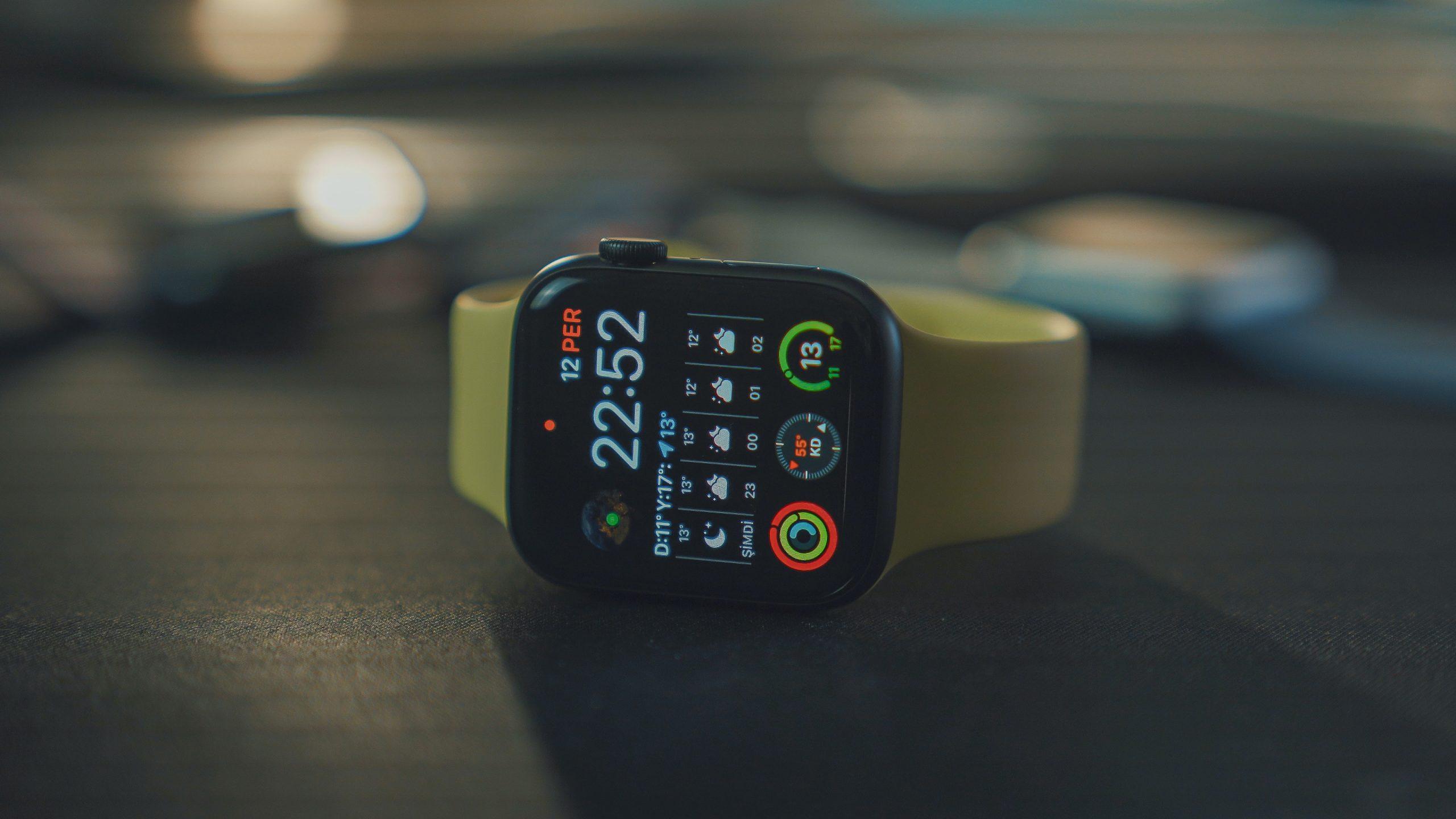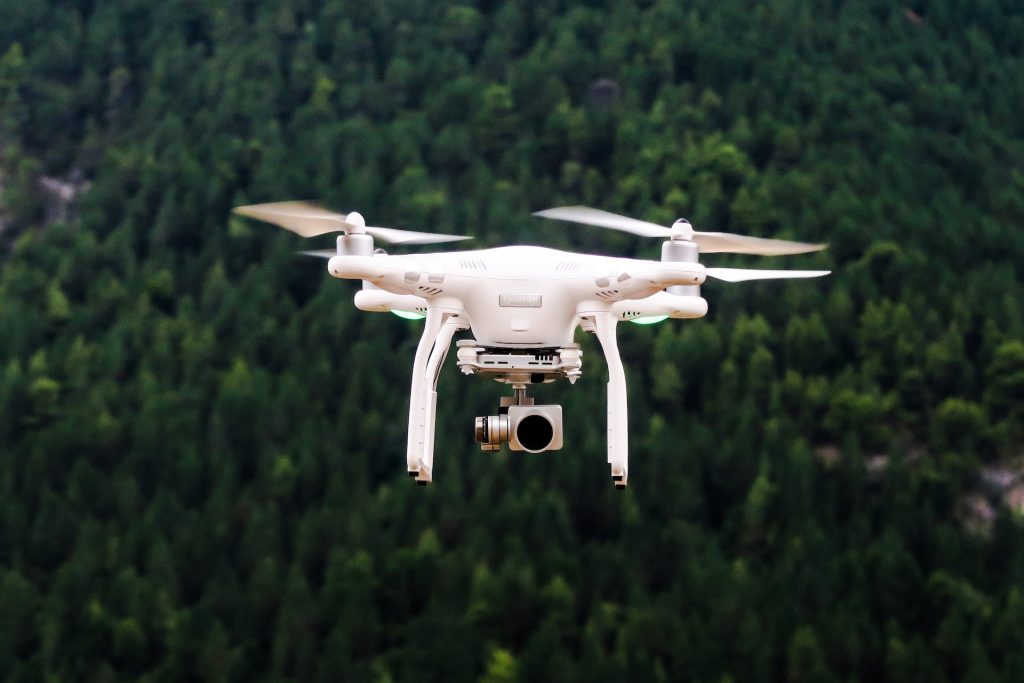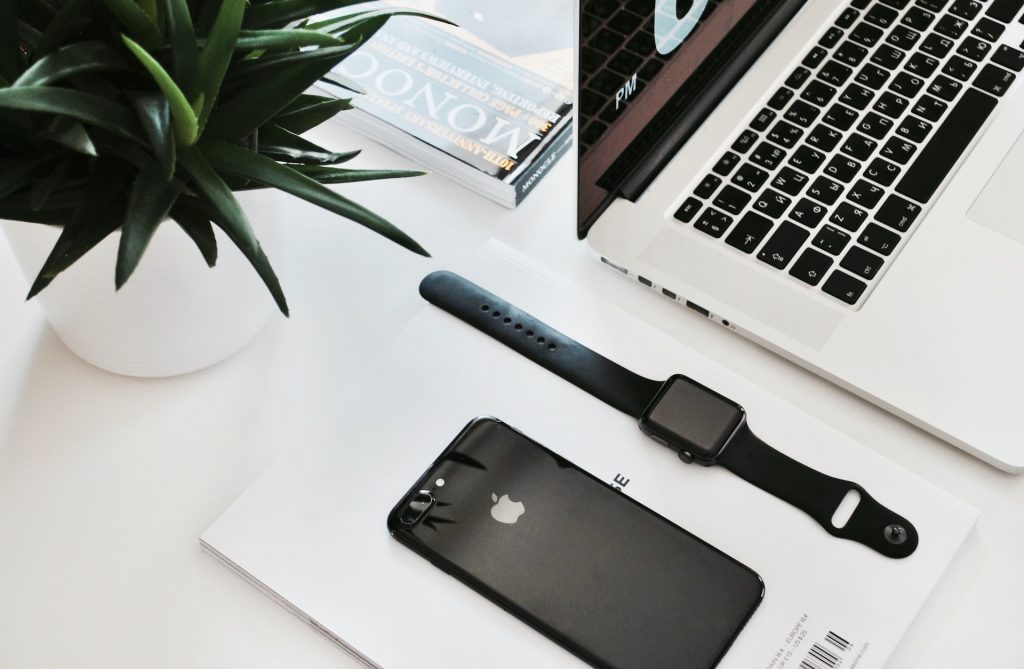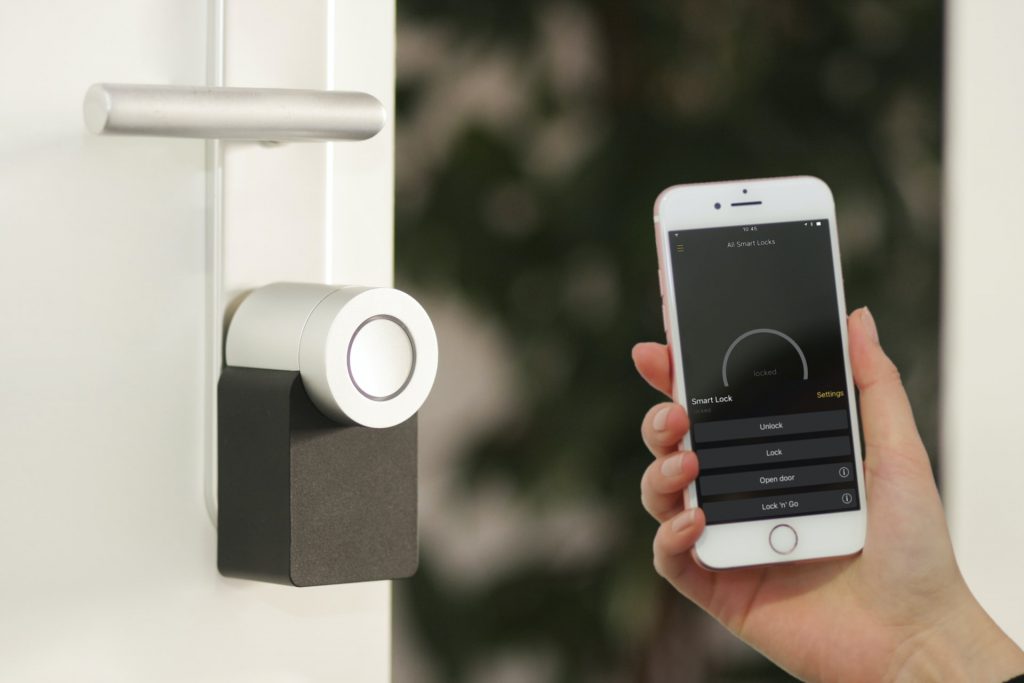
What Is IoT (Internet Of Things) & How Can It Help Your Business?
Ritesh Shah
17 min read

Internet Of Things Definition 📟
The Internet of Things (IoT) is a powerful interconnected web that brings us into the age of automation, enabling physical objects and devices to talk and even act. From controlling home appliances remotely with just your phone to monitoring vehicle performance miles away, IoT has revolutionised how we interact with our environment.
IoT technology provides real-time data, increasing efficiency and convenience, and enables new and innovative applications and services. IoT can be leveraged in the business world to drive innovation, improve operations, and increase profitability.
This article answers the question “what is IoT?” with examples of how it’s currently being used, so you can get ideas to incorporate it into your business for greater success. Whether you’re a small business owner or even a multinational corporation, this guide will provide the information you need to understand how IoT may benefit your company and how to implement it.
Who Invented The Internet Of Things? 🛠️
First things first — who invented the internet of things? Is it even something that was invented?
Way before today’s connected world of smart homes and self-driving cars, the idea for an interconnected future began with something seemingly mundane: a cola machine. In 1982 at Carnegie Mellon University, computer scientists developed technology that enabled them to check via the internet if any Coke was left in the vending machine—so they’d know whether it was worth making a trip from their desks! This breakthrough paved the way for what we now call The Internet of Things.
The initial concept of the Internet of Things was first introduced by Kevin Ashton, a British technology pioneer, in 1999. However, the development of IoT technology can be attributed to the contributions of many individuals and organisations over several decades. The evolution of IoT was a result of advancements in multiple fields, including computer science, communication technology, and sensor technology. The combination of these fields allowed for the creation of interconnected devices which could communicate with each other and the internet, leading to the development of the IoT.
It is, therefore, not accurate to say that one person or organisation “invented” IoT but rather that it is the result of collective efforts and innovations in various fields.
Why The Internet Of Things Is Important 🌟
The Internet of Things is important quite simply because this modern tech provides various benefits that make everything easier and more convenient.
First off, it provides improved efficiency by allowing for the automation of various tasks and processes. Especially useful is the fact that IoT devices collect and transmit data in real-time, enabling organisations to make informed decisions based on accurate and up-to-date information.
IoT technology also gives you the ability to create new and innovative applications and services that were not previously possible. For instance, IoT-enabled cameras and sensors can be used to monitor public spaces and improve public safety.
Another way IoT is vital in the modern era is its contributions to improving the quality of life of individuals by enabling better healthcare, smarter cities, and more sustainable environments.
Overall, IoT technology makes our lives more convenient by enabling us to remotely control and monitor various aspects of our homes, work environment, and even large-scale communities.
IoT Devices: Some Internet Of Things Examples 💁♀️
🏡 Smart Home Devices
Many smart home devices leverage the Internet of Things to provide enhanced convenience, security, and control over the home environment. Some examples include:
- Smart thermostats: These devices allow you to use your smartphone or tablet to monitor and control your home temperature.
- Smart lights: These let you control the lights in your home and set schedules for when they should turn on or off.
- Smart locks: You can control and monitor these locks remotely, making it easy to lock or unlock your door from your smartphone.
- Smart security cameras: These cameras let you monitor your home remotely and receive notifications when there is activity.
- Smart smoke detectors: These detectors can send alerts to your smartphone if they detect smoke or carbon monoxide.
- Smart home assistants: Devices like Amazon Alexa let you control different aspects of your home and perform tasks such as setting reminders or playing music. (Check out the tech behind Amazon Alexa for more ideas!)
🎧 Wearables
As the name suggests, you wear these devices on your body, and IoT technology helps provide various features and functions. Some examples of such wearables include:
- Fitness trackers: Wearable devices like Fitbit track physical activity and help you monitor an array of data from heart rate to calories burned as well as sleep patterns.
- Smartwatches: Devices like the Apple Watch can be used to send and receive texts and calls, track your physical activity, and monitor your health.
- Virtual & augmented reality (VR/AR) headsets: Devices like the Microsoft HoloLens allow users to experience VR and AR environments. L’Oreal is using this to improve customer experience.
- Smart glasses: Devices like the Google Glass provide augmented reality displays and hands-free computing.

🩺 Smart Healthcare Devices
Here are some examples of smart healthcare devices using IoT technology:
- Wearable health monitors: This includes devices discussed previously, such as fitness trackers and smartwatches to track vital signs, physical activity, and sleep patterns, providing valuable data for healthcare professionals.
- Remote patient monitoring devices: These allow patients to monitor their health conditions from home and send data to their healthcare providers.
- Smart pill dispensers: These remind patients to take their medications and track whether they have been taken.
- Smart inhalers: These devices track the usage of inhalers and send data to healthcare providers for monitoring and analysis.
🏭 Industrial IoT Devices
When you use IoT technology in industrial settings, it’s referred to as the Industrial Internet of Things (IIoT). Here are some examples of these devices:
- Predictive maintenance sensors: These sensors monitor industrial machinery and predict when maintenance will be required, reducing downtime and increasing efficiency.
- Industrial robots: Robots equipped with IoT sensors can be programmed to perform various tasks and communicate with other devices on the factory floor.
- Smart grids: IoT technology can be used to manage the flow of electricity in power grids, optimising energy usage and reducing waste.
- Supply chain tracking: Modern IoT tech allows businesses to watch their goods as they move through the supply chain for unprecedented visibility and improved efficiency in managing inventory.
- Environmental monitoring: IoT sensors can be used to monitor environmental conditions in industrial settings, improving safety and reducing waste.
- Asset tracking: IoT devices can be used to track and monitor the location and condition of industrial assets, reducing loss and improving utilisation.
🌾 Smart Agriculture Devices
Some examples of smart agricultural applications of the Internet of Things include:
- Precision agriculture sensors: These sensors monitor soil moisture, temperature, and nutrient levels, allowing farmers to optimise irrigation and fertilisation.
- Livestock monitoring: You can use IoT devices to monitor the health and behaviour of livestock, improving their well-being and reducing loss.
- Weather stations: IoT-enabled weather stations provide real-time data on weather conditions, allowing farmers to make informed decisions about planting and harvesting.
- Drones: IoT-equipped drones can be used for crop monitoring and mapping, improving yields and reducing waste.
- Smart greenhouses: IoT sensors can be used to monitor and control temperature, humidity, and light levels in greenhouses, improving crop yields and reducing waste.

You can check out how John Deere is using machine learning in agriculture for another effective use of modern technology.
🌃 Smart City Devices
Smart cities use IoT to improve the quality of life for their citizens and make cities more sustainable and efficient. Check out these applications of IoT technology in smart city devices:
- Smart lighting: IoT-enabled streetlights can be controlled and monitored remotely, reducing energy usage and improving public safety.
- Traffic management: IoT sensors can be used to monitor traffic flow, optimise signal timings, and reduce congestion.
- Environmental monitoring: IoT devices can be used to monitor air quality, water quality, and waste levels, improving sustainability and public health.
- Smart waste management: IoT sensors and devices can be used to optimise the collection and disposal of waste, reducing waste and improving sustainability.
🛍️ Retail IoT
Retail Internet of Things refers to the use of IoT technology in retail settings to improve the shopping experience and increase efficiency. Here are some examples:
- Smart shelves: IoT-enabled shelves can detect when products are running low and automatically reorder, reducing waste and improving inventory management.
- Customer tracking: IoT sensors and cameras can be used to track customer movements and behaviours, providing valuable insights into consumer preferences and behaviours.
- Interactive displays: IoT-enabled displays can be used to provide customers with product information and recommendations, improving the shopping experience.
- Mobile payment: IoT-enabled mobile payment systems allow customers to make payments using their smartphones, enhancing convenience and reducing checkout time.
Other Ways How The Internet Of Things Helps Businesses 👨💼
Aside from the above examples of leveraging IoT technology, companies can incorporate the Internet of Things into their business models to generate additional revenue streams in several ways.
👨💻 Monetising Data
By leveraging the data collected from connected devices, companies can develop comprehensive insights into customer behaviour and preferences. This data could be used to create customised marketing campaigns that target specific demographics more effectively, develop personalised product recommendations tailored to an individual’s needs and interests, and analyse the collected data to produce insightful reports on current trends in consumer behaviour, allowing them to stay ahead of market changes and adapt their strategies accordingly.

Companies can also offer access to their data to third parties, such as researchers or analysts, who may require vast amounts of reliable information for various research projects or development initiatives. There are many such ways businesses can incorporate IoT technology and monetise their data depending on their industry and objectives.
📲 Platform-based Model
Businesses can incorporate IoT technology into a platform-based model to create an interconnected, interoperable system that allows them to generate more revenue from related transactions. By connecting the devices, businesses can collect and analyse data, which can then be used to develop services on their platform and create personalised experiences for users. This will allow them to better understand user behaviour and preferences while providing better customer service.
Furthermore, businesses can leverage IoT technology’s power to automate processes to reduce costs and improve efficiency. For example, by using connected sensors, companies can monitor the performance of their machines or detect any potential issues ahead of time. They can also use predictive analytics to anticipate customer needs and provide timely solutions.
🚜 Asset-sharing Model
Businesses can incorporate IoT technology into asset-sharing models in various ways. By using sensors to track the location and usage of the machines, you can effectively manage your shared equipment and its use. This data will result in improved maintenance schedules, extend the lifespan of machines, reduce wear and tear, increase the efficiency and productivity of equipment, and save money on unexpected repairs.
Plus, by monitoring engine data in real-time with IoT technology, businesses can minimise breakdowns that could otherwise be costly and time-consuming. In addition to improved operational management practices for shared assets, organisations can also benefit from increased customer satisfaction levels due to improved access to needed resources without long-term investments or heavy maintenance costs.
Furthermore, IoT technology within asset-sharing models at a macro level allows for more efficient utilisation of expensive equipment across industries worldwide. The combination of these effects means businesses no longer need to commit to large investments towards this type of equipment – they can rent it out as needed while also receiving payments from other companies sharing it simultaneously.
By implementing IoT technology into asset-sharing models, businesses gain access to more cost-effective resources while helping create a sustainable future based on resource optimisation and collaboration between different organisations.
🎟️ Subscription-based Services
Businesses can use IoT technology to create subscription-based services that provide a range of features for customers, such as monitoring and controlling various aspects of homes, from lighting and temperature to security and surveillance. Access to data collected by the sensors in these devices will give customers real-time insights into their home environment. With the help of cloud computing technology, this data can be sent directly to a customer’s smartphone or computer so they can better understand their homes and make changes accordingly.
Businesses can also use IoT devices like smart speakers and thermostats to create automated systems that respond intelligently to customer commands. This would allow customers to control their homes with just a few spoken words or through an app on their phone. The possibilities with subscription-based services incorporating IoT technology are virtually endless as businesses can combine sensors, automation, analytics, artificial intelligence (AI), and voice recognition technologies into unique solutions tailored to customer needs.
📦 Product-as-a-Service
Businesses are increasingly incorporating IoT technology into product-as-a-service models to create more efficient and cost-effective solutions. This type of model helps provide customers with the latest technological products without having to purchase them outright.
IoT devices enable companies to gain insights into how customers interact with their products, helping them understand customer preferences and optimise services. For example, a company offering vehicle fleets can track usage in real-time and adjust its subscription plans accordingly to better meet customer needs.
🛒 Upsell Opportunities
Businesses can incorporate IoT technology to identify upsell opportunities by collecting and analysing data from connected devices. For example, a company that sells home appliances can use IoT-enabled devices to monitor usage patterns, maintenance requirements, and identify opportunities for consumers to upgrade their appliances. This information can be used to offer targeted recommendations for upgrades or complementary products, such as extended warranties or smart home accessories, to improve the customer experience and increase revenue.

By leveraging the data and insights IoT technology provides, businesses can create new and improved sales strategies, leading to greater customer satisfaction and increased revenue.
💸 Cost Savings
Businesses can incorporate IoT technology to achieve cost savings in several ways. First, by connecting devices and systems, businesses can automate processes and decrease manual labour requirements, resulting in improved efficiency and lower labour costs. For example, a manufacturer can use IoT sensors to monitor production line performance, identify areas for improvement and reduce downtime.
Second, IoT technology can help businesses monitor and optimise resource usages, such as energy and water, leading to reduced utility costs.
Third, IoT technology can be used for predictive maintenance, enabling businesses to identify and fix equipment problems before they lead to costly breakdowns, reducing maintenance and repair expenses.
By utilising IoT technology, businesses can gain real-time visibility into their operations, enabling them to make data-driven decisions that drive cost savings and improve profitability. The key is to understand the unique needs and challenges of your business and to find the right IoT solutions to meet those needs.
How To Get Started With IoT For Your Business 🌱
It can seem overwhelming to get your business started with IoT technology, but you can take these steps to make the process easier:
- Identify business needs: To make the most of IoT, start by asking yourself what issues your business needs to solve and what opportunities you want to grab. Identifying those areas where it can best apply its problem-solving superpowers will help ensure that each step taken with this cutting-edge technology is strategic in nature.
- Assess your technology infrastructure: Make sure that your technology infrastructure is up to date and can support IoT devices. You will need a robust network and reliable internet connectivity to make the most of IoT.
- Research IoT solutions: Research the various IoT solutions available and identify the ones best suited to your business needs. Make sure to consider factors such as cost, compatibility with your existing technology, and ease of use.
- Build a proof of concept: Once you have identified the right IoT solutions for your business, start with a small pilot project to test and validate the solution. This will help you understand the value IoT can bring to your business and identify any challenges or barriers you may encounter.
- Start small and scale up: Start with a few IoT devices or solutions and gradually scale up as you become more comfortable with the technology. This will help you minimise risk and ensure that you use IoT in the most effective way possible.
- Partner with an expert: Consider partnering with an IoT expert, service provider, or experienced tech consultant to help you get started. They can provide guidance, support, and expertise to ensure that you are using IoT in the most effective way possible.
- Consider security: Security should be a top priority when implementing IoT. Ensure to implement security measures such as encryption, firewalls, and secure authentication to protect your data and devices.
- Analyse data and measure results: Glean insights from your IoT data to supercharge the performance of your solution. Identifying areas where you can optimise will help ensure that it delivers maximum value for your business.
By following these steps, you can get started with IoT in a structured and effective way and realise the benefits of this technology for your business.
Bonus: IoT Security Threats 🚧
The Internet of Things offers many benefits but also introduces new security threats that organisations need to be aware of. Here are a few common IoT security threats and how to avoid them:
🤼 Man-in-the-middle Attacks
Man-in-the-middle attacks occur when a hacker intercepts communication between two devices, allowing them to steal data or inject malware into the communication stream. To prevent these attacks, use encryption to secure communication between devices and validate and authenticate all communication.
⚠️ Unsecured Networks
IoT devices rely on networks to communicate. If these networks are not secured, they can be vulnerable to attacks. Make sure to use secure protocols, such as SSL/TLS, to encrypt communication and implement firewalls and access controls to prevent unauthorised access to your network.
🤖 IoT Botnets
An IoT botnet is typically a network of IoT devices infected with malicious code to launch a cyber attack. These attacks can be used for distributed denial-of-service (DDoS) attacks, which overwhelm the target’s network traffic or to steal confidential information.

Businesses must stay up-to-date on the latest cybersecurity measures and take steps to protect against this threat. This includes adopting strong authentication protocols, ensuring all IoT devices are regularly updated and patched and confirming they meet security standards and protocols before they are connected to a company’s network. Segmenting the network so that only authorised personnel can access the IoT devices can also help reduce the risk of compromise should one become infected.
🐍 Insider Threats
Insider threats, such as employees or contractors with access to your network and devices, can pose a significant risk to your organisation. To protect against insider threats, implement access controls and security policies, and monitor for suspicious activity.
🛡️ Technical & Physical Security
Many IoT devices are poorly secured, with weak passwords and vulnerabilities that hackers can exploit. To protect the devices, ensure your customers are fully aware of the need to use strong passwords, update firmware regularly, and install security patches as soon as they become available.
Organisations must adopt a comprehensive and proactive approach to IoT security to deal with these security threats. This includes regularly reviewing and updating security policies, conducting regular security audits, and investing in secure IoT solutions. By taking these steps, organisations can protect their devices and data and ensure that their IoT implementation is secure and reliable.
Final Words: What Is IoT? 📋
In conclusion, the Internet of Things is a rapidly growing technology that offers numerous opportunities for businesses to improve their operations and drive growth. Whether it is for cost savings, upsell opportunities, or improved customer experiences, IoT technology can help businesses gain valuable insights and automate processes, leading to improved efficiency and increased profitability.
However, implementing IoT solutions can be complex and requires careful planning and execution. Businesses must consider the privacy and security implications of connecting devices and handling large amounts of data. By working with a trusted provider or credible tech consultant, businesses can develop a customised IoT strategy that aligns with their goals and delivers tangible benefits.
As IoT continues to evolve and expand, companies that embrace this business technology will be well-positioned to avoid disruption, have a competitive edge, and thrive in the digital age!
Embrace the possibilities of IoT technology! Our unique combo of business-savvy and technical know-how can provide tailored solutions for any problems you might have. Schedule a friendly discovery chat to find out if and how IoT devices could be just what your company needs to reach new heights.
Topics
Published On
February 06, 2023

